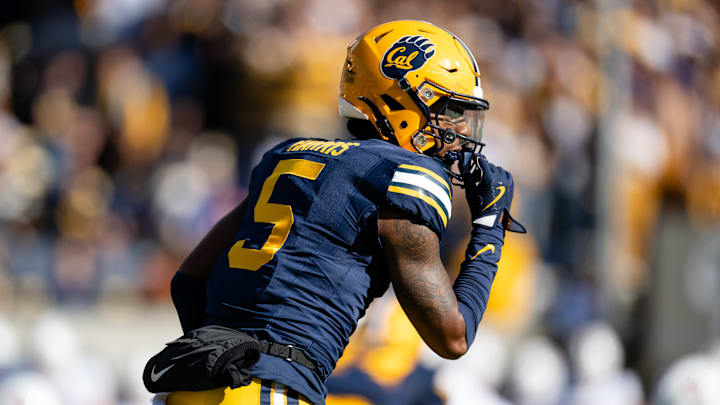The Tennessee Titans' paper-thin secondary was a significant factor in their 2024 defensive collapse. First-year general manager Mike Borgonzi immediately went to work on this issue by adding two new defensive backs in his first draft class in Tennessee.
With the first of their two sixth-round picks, the Titans selected cornerback Marcus Harris out of California. A member of a loaded Golden Bears secondary, he flew under the radar in comparison to his teammates such as Nohl Williams and Craig Woodson. However, Harris was still a pivotal member in the success of that unit.
Continuing their theme of high-upside picks in this draft class, the Harris pick was clearly based in projection. While he may not see a substantial snap count in his rookie season, he still has a lofty ceiling and could develop into an early rotational piece in Tennessee’s secondary.
What does Marcus Harris bring to the Titans’ defense?
When discussing draft prospects, typically the term “ceiling” is used in reference to a player’s athletic traits. This rings true in the case of Harris as well. While he displayed a serviceable 4.45 second 40-yard dash at the NFL Scouting Combine, his film showcased a top-end athlete.
Harris’ exceptional twitch and recovery speed are key factors in what gives him such a high ceiling. Pairing his athleticism with his quick trigger when coming downhill, he’s a consistent threat as a run defender. His willingness to tackle, ability to dismantle screen plays, and play recognition make him a physical presence in the secondary.
New #Titans DB Marcus Harris brings a new level of physicality to Tennessee's cornerback room. I project him more as a nickel, but I'd expect him to see the field in some capacity as a rookie pic.twitter.com/vO3VRUi0jk
— Drew Beatty (@IronCityFilm) July 2, 2025
Where does Marcus Harris need development?
In coverage, Harris’ athleticism and instinctive play style allow him to thrive in zone coverage. While his physical traits are vital to success in man coverage, his technique is still in need of major refinement. His instinct-reliant style of coverage makes him uniquely suited for a zone coverage role, but it also leads him into trouble when he is forced to play one-on-one man coverage.
In addition to having a tendency toward gambling in coverage, Harris also possesses a concerning level of stiffness in his hips. This combination proves especially dangerous when covering stop routes (hitches, curls, comebacks, etc.). Despite being an elite straightline athlete, he has a difficult time sinking his hips and mirroring receivers on these routes.
Another area in which Harris requires improvement is at the catch point. While he’s a distinct presence in run defense, that physicality does not translate into contested catch situations. He has a tendency to lack aggression at the catch point and allow receivers to win through contact.
Where Marcus Harris fits into the Titans’ secondary
Despite playing primarily as a boundary corner in college, his skillset projects him more as a nickel corner at the NFL level. His physicality, size limitations (only standing at 5-foot-11 and 190 pounds), and ability as a run defender give him a much clearer path to the field as a nickel.
With Tennessee’s nickel corner role currently being played by Roger McCreary, Harris would be given time to sit and refine his technique under the Titans’ coaching staff. With an extended period of time to develop, he could eventually grow into a long-term solution at nickel corner.
